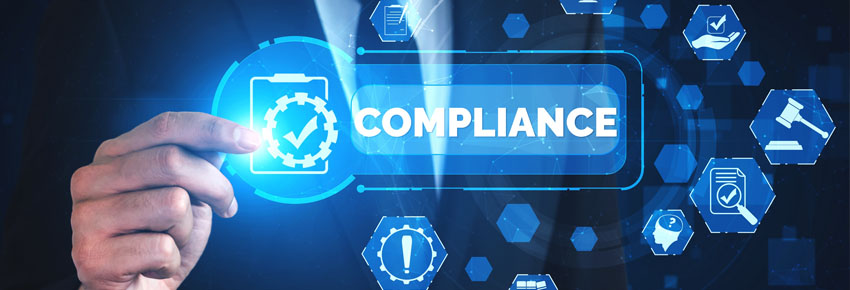What to Consider While Ensuring Compliance in a Remote Working Environment?
Aug 18, 2020 | 42Gears Team
Remote work is redefining the future of enterprise. The surge in remote work due to the coronavirus pandemic has caused compliance and security to take a back seat. Since the pandemic, IT security leaders have struggled to minimize disruption and ensure business continuity. In particular, leaders have struggled to securely make work data available to employee devices and their work applications over any network. This has afforded cybercriminals access to business data through employee devices and compromised networks.
Let’s see the top compliance factors that security pros must keep in mind when ensuring compliance and security for a remote workforce.
Device Ownership
A large number of employees will have to continue working remotely for months or years longer than initially anticipated. Thus, it is important that businesses define policies for various device ownership models- COD (corporate-owned devices) or BYOD (bring-your-own-devices). A good remote working policy will empower employees to perform respective job functions by enabling access to business resources without compromising security.
The use of company-issued devices must be limited to work purposes only. Companies must also restrict employees’ access to websites outside the scope of work. However, in case of BYOD, this is not always possible. Thus, employers must define BYOD policies clearly and ensure that employee-owned devices are onboarded and provisioned properly. Enrolling devices in an MDM solution can help IT admins monitor devices and ensure compliance at the same time, irrespective of device ownership.
Security for Third-Party Tools
Collaboration and productivity tools are essential for remote work, preventing workflow disruptions and ensuring business continuity. However, if not controlled properly, nearly all applications have access to contact lists, credentials, emails, and other sensitive data.
Companies must consider compliance and security for business data and data privacy when employees use a large number of third party tools and instant-messaging apps such as WeChat and WhatsApp. Security officers must enable advanced level controls for third-party apps that can access SaaS or cloud-based applications. Additionally, officers should ban employees from downloading apps from third-party stores, as this can prevent employees from downloading risky or unauthorized applications.
Passwords
Employees storing passwords on the system screen can pose a risk. Similarly, employees using one password for multiple accounts can also create vulnerabilities. Users must update their passwords regularly and avoid using low-complexity passwords on corporate accounts. Users must always log out of their accounts when no one is using them to maintain compliance in a remote working environment.
Network and Data Security
Secure remote access is key to ensuring that employees can get their work done while working from home. Users must connect only to trusted networks and avoid free public networks, which can often leave devices open to man-in-the-middle attacks.
Security pros can ensure security of confidential communications and company resources by encrypting data which prevents hackers from getting unauthorized access to the data.
Updates
Devices running outdated operating systems and apps are enticing targets for hackers. Outdated software doesn’t receive the preventive patches necessary to keep machines safe from malware and other threats. This risk is amplified with a remote workforce as remote employees rely completely on online communications. Outdated software may often give access to bad actors through social engineering.
Security pros must ensure that workers apply updates to their devices as soon as they become available, in order to patch security flaws and prevent hackers from targeting those flaws via infected media files, malicious websites, or compromised emails.
Difficult times call for difficult measures. And this is probably one of the most difficult times in recent history. If there’s one lesson that the coronavirus pandemic has taught businesses, it is to make compliance and security a priority when overseeing a remote workforce. The right remote working policies, combined with an endpoint management solution, can help to improve organizational compliance and security. With its Enterprise license, SureMDM provides built-in mobile threat detection along with the controls needed to manage and maintain compliance on corporate or employee-owned endpoints that access business-critical data.
SureMDM helps ensuring compliance in a
remote working environment easy
Subscribe for our free newsletter

